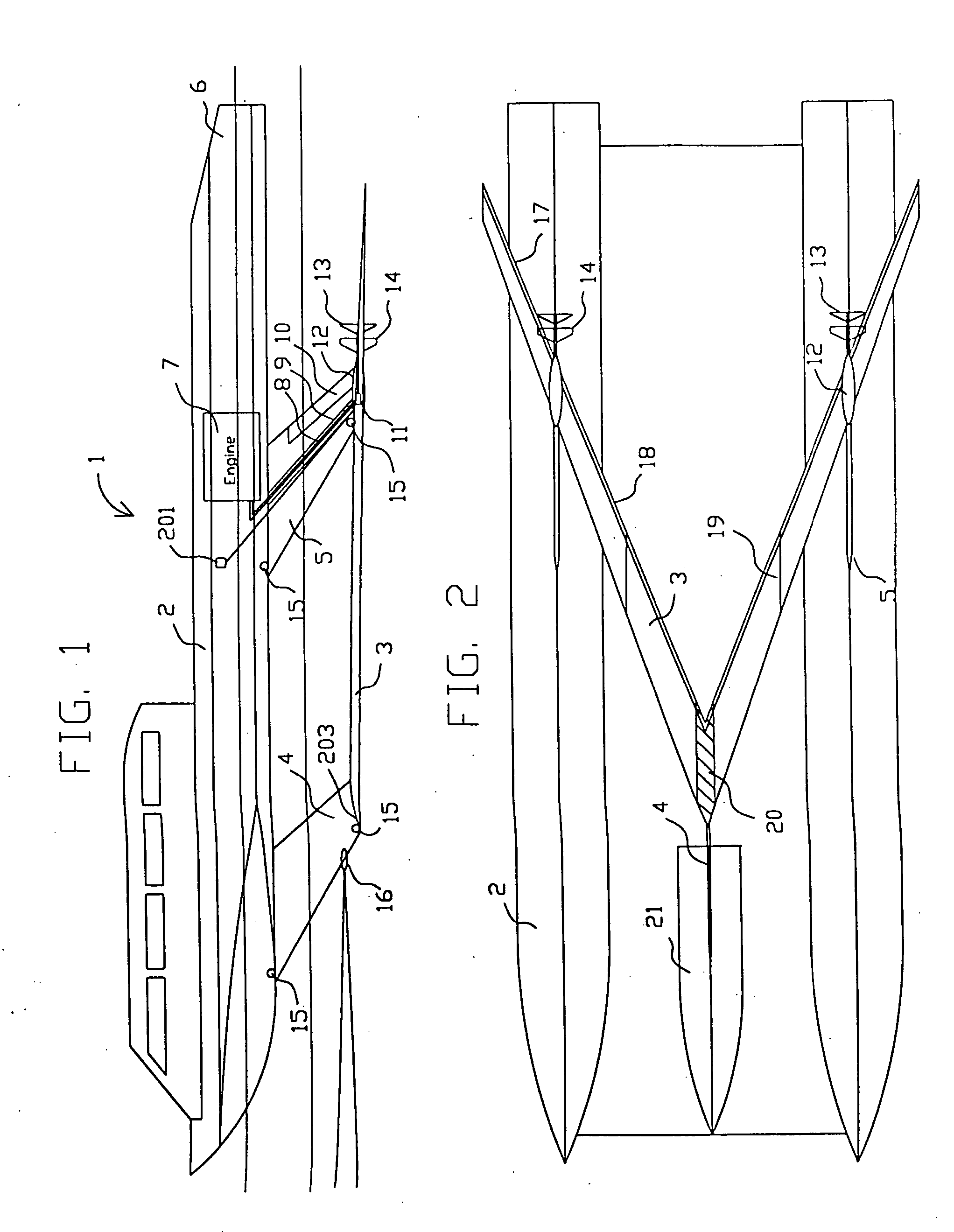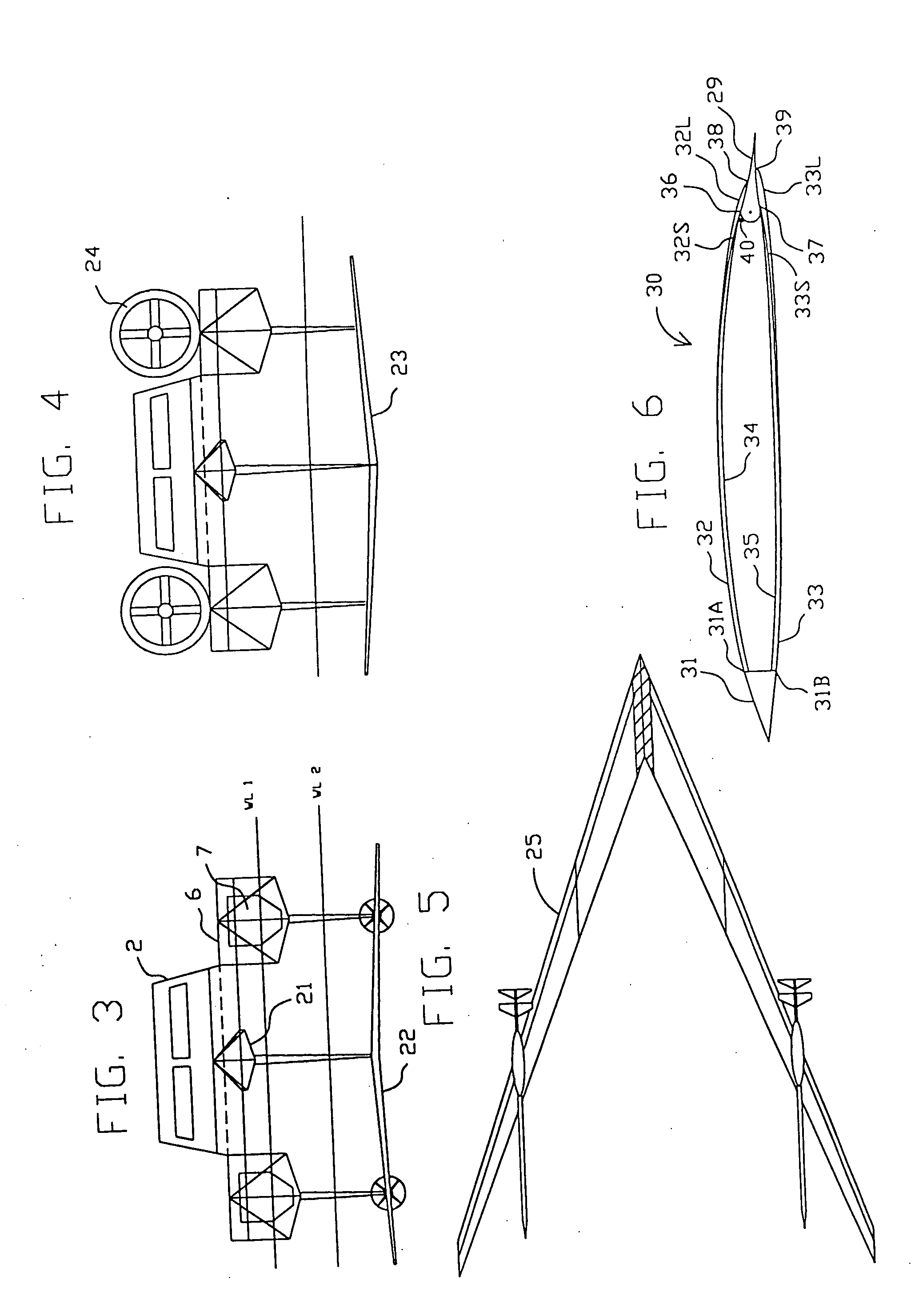Low-drag hydrodynamic surfaces
- Summary
- Abstract
- Description
- Claims
- Application Information
AI Technical Summary
Benefits of technology
Problems solved by technology
Method used
Image
Examples
Embodiment Construction
[0056] In FIGS. 1 and 2, the hull 2 of hydrofoil craft 1 is supported above water by forward strut 4 and two aft struts 5 which are attached to lifting v-hydrofoil 3. The propulsion system consists of engine 7 in each catamaran hull 6 that drives shaft 8 located in duct 9 of strut 5, thereby eliminating drag on the drive shaft. Shaft 8 enters gearbox 11 located inside pod 12 to drive propeller 13. Pre-spin vanes 14 rotate the water flow entering the propeller so that the water flow leaves the propeller without significant rotation, thereby increasing propeller efficiency. This hydrofoil and propulsion arrangement is equally applicable to monohulls, trimarans or other hull shapes, and applies to one or more support struts, engines and propulsors. Each strut can either be swept back, as shown, or unswept, or swept forward. Strut sweep reduces strut spray drag, and reduces strut side force in beam waves. Hydrofoil sweep reduces susceptibility to cavitation, and reduces craft vertical m...
PUM
 Login to View More
Login to View More Abstract
Description
Claims
Application Information
 Login to View More
Login to View More - R&D
- Intellectual Property
- Life Sciences
- Materials
- Tech Scout
- Unparalleled Data Quality
- Higher Quality Content
- 60% Fewer Hallucinations
Browse by: Latest US Patents, China's latest patents, Technical Efficacy Thesaurus, Application Domain, Technology Topic, Popular Technical Reports.
© 2025 PatSnap. All rights reserved.Legal|Privacy policy|Modern Slavery Act Transparency Statement|Sitemap|About US| Contact US: help@patsnap.com



